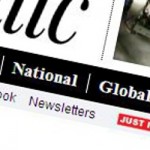The Irish Institute of European Affairs recently held an event on the future of journalism, featuring speeches by RTÉ‘s Director General Noel Curren, The Irish Times‘ Editor Kevin O’Sullivan, The Journal‘s Co-Founder Brian Fallon and Silicon Republic‘s Editor-At-Large Ann O’Dea.
For the most part the speeches were interesting, though unsurprisingly they did not give the audience anything that it did not already know.
One aspect that did stand out for me, however, was Brian Fallon’s number-crunching on potential revenue models for Irish media outlets. I’ve already had a discussion with him on Twitter about the figures but I thought it might help to blog about too, as 140 characters just is not enough space when you are trying to question and make nuanced points.
Fallon’s figures
You can see the details of Fallon’s figures for yourself by skipping ahead to the 8m 25s mark on the video of his speech. Failing that, you can also read through his presentation, which has helpfully been made available online (the revenue figures can be found from page 19 on).
To summarise, however, Fallon suggests:
- Based on the average online readership of traditional media outlets like The Irish Times, RTÉ and The Irish Independent (all ~700,000 unique readers per month reading 35m pages – excluding mobile readership and, according to Fallon, international readers too) you could reasonably expect to generate revenue of €3.8m per year.
- Using the subscription price charged – and a similar conversion rate predicted – by The New York Times under its “freemium” model (5% of online readers paying ~€155 per year) these same sites could stand to generate €3.3m in revenue per year.
Fallon says this kind of revenue would be enough for an outlet like The Journal to employ 80 journalists.
To me, however, his numbers do not add up.
The freemium cliff
The “freemium” model used by The New York Times is relatively simple – allow users a limited amount of free access (initially the NYT allowed 20 monthly page views for free, now it’s just 10), after which they the a paywall and must subscribe or go elsewhere.
The theory is this allows a site to continue to draw in casual readers and make money from their page impressions, while also forcing people to pay up if they are heavy users of the site.
There’s no reason why it could not be deployed in an Irish context (bar RTÉ, in my opinion, which would be breaching its public service remit by going behind a paywall of any kind) but the problem is the readership figures currently enjoyed would become irrelevant.
Once you erect a paywall – freemium or otherwise – you will lose readers. The NYT lost 5-15% of its daily readership in the immediate aftermath of its move to freemium – meanwhile its page views declined by 30%.
It makes sense – if people cannot access more than 20 pages without paying then page views will drop. Many users will also decide to go elsewhere for their news altogether – you just have to hope there are more who decide to cough up for a subscription.
In an Irish context, a 30% drop in page views would mean 10.5m fewer pages read a month – a corresponding drop in revenue (based on Fallon’s figures) would bring that €3.8m of ad money down to €2.6m.
The chicken and the egg
The other problem I see in Fallon’s hypothesis is the application of big media outlets’ numbers to a smaller, low-cost outlet.
In saying that The Journal would be able to grow its team of journalists massively if it had revenue from readership figures akin to The Irish Times, The Irish Independent or RTÉ – coupled with subscription numbers relative to those aspired to by The New York Times – to me misses an important point.
Getting those kind of readership figures – and most importantly the kind of readership that will pay for access – costs.
The aforementioned big media outlets have the readership figures that they do for a number of reasons, not least because they have a large, broad staff that create the content that attracts so many readers.
In other words, to me, it’s not a question of “get X readers so you can employ Y journalists”, it’s the other way around.
When it comes to subscriptions I think having a breadth of unique, quality content is even more critical.
The NYT has a well-earned reputation for quality – in the last three years alone work published in the newspaper has received seven Pulitzer Prizes, for example.
It has enough breadth and depth that it can demand a fee from its readers and clearly there are plenty of readers who feel they are getting value for money from that arrangement.
With all due respect to The Journal I don’t think all that many of its readers would be as willing to pay up if it deployed a freemium model tomorrow. (I’d wager that staff and management within The Journal itself would agree with that – otherwise it would probably have done it already).
That’s not to say that having the kind of feature writers, correspondents, analysts, columnists, investigative journalists and multimedia journalists required to change that dynamic is not on The Journal’s roadmap; I can only assume it is.
However as any media outlet moves to build this kind of fully-fledged newsroom – even those with no legacy costs to worry about – it will quickly encounter financial demands beyond the journalist’s pay.
For example, a correspondent might incur expenses as part of their daily routine, which need to be covered. A multimedia journalist needs to be backed-up with good equipment (camera, mic, a computer, editing software etc) and perhaps even another body to film or edit. An investigative journalist needs time and resources to create a single story that might not come close to paying for itself in the short-term.
For that reason alone I don’t think it’s entirely fair to apply the audience stats of a big media organisation to the cost structure of a small operator – it puts too much emphasis on legacy costs and to some degree overlooks the investment required to build a loyal audience.
A note of optimism
That said I do think Irish journalism can be profitable in the online sphere and I also share Fallon’s optimism about the future of journalism, albeit, perhaps, for somewhat different reasons.
It’s clear that a realisation has hit the Irish media, something that The Journal can probably take some credit for. Traditional outlets are beginning to take the internet seriously, because they finally realise its importance to their surivival.
The Irish Times, for example, is starting to do some really interesting things online and seems to be moving away from the “print on your computer” mentality that has hampered the digital strategies of newspapers the world over.
The Journal too has shown what can be achieved in a short space of time with a low cost-base. I’m interested to see how it develops over the next 18 months, as I feel it is at an important juncture which will define the outlet for the foreseeable future if not forever.
I also think that the freemium model has merit and could be successfully applied to an Irish outlet; I’m not convinced that there is any that have hit the right note to pull it off just yet, though.






